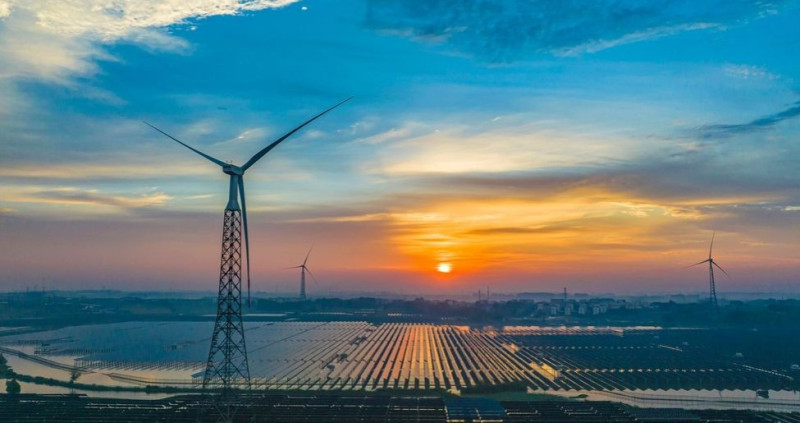The trenches of East Africa, known as the East African Rift, have been making their rounds in the media. The tracks are evolving into a renewable energy hub from carbon removal to hydropower. And of late, the Rift Valley has been attracting foreign investments, indicating East Africa’s expansion in renewable growth and its competitive spot on the global markets.
In Kenya’s Rift Valley, the first direct air capture (DAC) plant in the global south is currently being constructed. Before now, only 27 plants have been commissioned worldwide: Europe, North America, Japan, and the Middle East. This is the 28th and the first for Africa, making it a noteworthy feat for Kenya. DACs are technologies that pull CO2 out of the atmosphere and either be stored away or put to use. The Plant will be able to capture one kiloton of CO2 annually and inject it into the porous volcanic rock in the valley.
Named Project Hummingbird, one can assume it is about the late Nobel laureate Wangarĩ Muta Maathai, a Kenyan environmental and justice activist who founded the Green Belt Movement, an environmental non-governmental organization focused on the planting of trees, environmental conservation, and women’s rights. The Plant results from a partnership between two startups, Cella Mineral Storage in New York and Octavia Carbon in Kenya. The Plant aspires to begin operation in October 2024, and one of its trade activities will be to sell carbon credits through Puro—Earth—another Octavia Carbon partner.
“I will be ” hummingbird
I will do the best I can!”
-Wangari Maathai, the First African Woman to Win the Nobel Prize
Carbon removal is a strategy implemented around the globe to stay below 1.5C and reduce the impacts of climate change. Afforestation, reforestation, seaweed farming, soil carbon, and DAC are just a few carbon removal strategies. DAC is still in the prototype phase. Even so, it is considered the most expensive form of carbon removal, a reminder that the journey to net zero by 2050 is expensive, costing the world trillions annually.
DAC technologies require a tremendous amount of energy, thus making Kenya the right environment for the plant because of the country’s vast geothermal potential. The plant will rely on renewable energy for the entire operation.
Meridiam, a global investor with headquarters in Paris, recently acquired Rift Valley Energy in Tanzania, Kenya’s southern neighbor. The long-term developer has a country presence in Europe, North America, and Africa and specializes in low-carbon innovative solutions and sustainable community infrastructure. Through its Meridiam Infrastructure Africa Fund, the firm is not new to East Africa and has invested in and built infrastructure in Kenya, Ethiopia, and Madagascar.
Iringa, Njombe, and Mbeya have all benefited from electrification thanks to Rift Valley Energy’s development of renewable energy infrastructure. Before the acquisition, the company had worked successfully with the Tanzanian government to create two rural distribution networks in Tanzania’s Southern Highlands, which helped to alleviate the area’s constraints. One could hope that Meridiam’s presence in Tanzania will positively impact the social and environmental conditions and draw in more high-impact investments.
Meridiam appears to be Tanzania for East Africa’s expanding renewable energy market area. The private equity firm only recently acquired Kipeto and Siruai wind farms. Kipeto is the second-largest wind power in Kenya and occupies 7000 hectares of land; in the $1 billion deal that included another French company, Engie, the wind farms were acquired from ACTIS.
“This acquisition, our first in Tanzania, reinforces and complements our clean energy footprint in the region. In Kenya, we recently invested in 250 MW wind and solar projects in operations and development and are currently building a 150 MW geothermal plant in Ethiopia. Rift Valley Energy illustrates our ambition to support the ecological transition in Africa and actively participate in transforming the Tanzanian Power mix.” the Meridiam’s Deputy CEO Mathieu Peller expressed – as quoted in the press release.
The Growing Crisis Calls for Swift and Aggressive Climate Action
The Intergovernmental Panel on Climate Change recently issued a warning that the effects of climate change are escalating quickly, indicating that the efforts being made on a global scale are not having much of an impact. This demonstrates the urgent need for the worldwide community to step up climate action. The DAC plant in Kenya is merely one step toward net zero; Eastern Africa can and ought to do more.
The plant should spur governments in Eastern Africa to investigate the opportunities in carbon removal and how to deploy carbon removal technologies affordably and responsibly. Some nations that have adopted policies supporting the DAC include Canada, Japan, the United Kingdom, and the United States. Our governments can pick up some tips from Western nations that are advancing DAC technologies.
Although there is always room for improvement, East Africa has an environment that encourages innovation. What we need are policies that promote investment. However, regarding investments from the Global North, Africa should exercise caution. The fossil fuel age is rooted in colonialism. We shouldn’t ignore that companies from the Global North have been exploiting fossil fuels in Africa. The effects of the Global North’s exploitation of our fossil fuel are still being felt in Africa.
We should consider whether the Global North is actually “helping” Africa develop energy sources or is merely switching from one resource to exploit to another. Are companies from Global North simply interested in the advantages of a clean energy portfolio, therefore just using Africa as a stepping stone?


Great post! I enjoyed reading it and learned a lot. Your writing style is engaging and easy to follow, and the information you provided was very helpful. Thank you for sharing your knowledge and expertise on this topic. Keep up the good work.